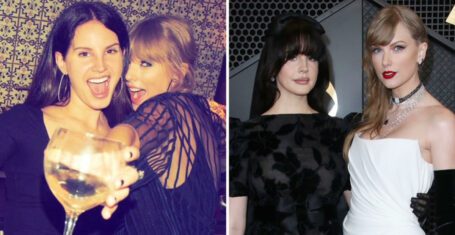
There are three relationship attachment styles and this is how to work out yours
Wow, my past relationships are making a LOT of sense
As much as we may hate to admit it, we all have questionable patterns when it comes to relationships. Perhaps you always fall head over heels straight away, become ultra clingy and want to spend 24/7 with the new guy you’ve been on one mediocre date with. Or maybe you always go for emotionally unavailable people despite saying to yourself you want someone who is open. Or perhaps you avoid dating all together and just have a string of one night stands. All of these dating patterns are part of your attachment style, which is developed in childhood and can play a big part in your romantic realtionships.
The three attachment styles – secure, anxious and avoidant, are based upon the work of psychologist John Bowlby. Bowlby studied the relationships between children and their parents to develop his theory of attachment. The theory suggests we are all born with an innate desire to connect to our primary caregiver and depending on the level of attention and availability they gave us in our early years this forms our social habits and this continues on throughout our romantic relationships today.
So what exactly does each attachment style look like? And how do you know which one you have? This everything you need to know about the different attachment styles:
Secure

via Netflix
Secure attachments are essentially the healthiest form of attachment and about half the population fall into this category.
If someone has a secure attachment it’s likely their primary caregiver was dependable and consistent. They grew up in a secure and nurturing environment where they were able to go out and explore the world but were also given the security of knowing they were cared for at home.
When it comes to romantic relationships someone with secure attachment is comfortable with intimacy, they’re not scared of rejection and are open and trusting. They can be comfortable with discomfort and don’t get discouraged with problems that arise.
They won’t be paranoid they’re getting dumped everyday and they won’t be scrolling through their partner’s phone to try and discover cheating. They appreciate space but also enjoy knowing they can depend on their partner when necessary.
Anxious

via Netflix
Anxious attachments are a form of insecure attachment and around a quarter of the population fall into this attachment style. If someone has an anxious attachment then it’s likely their primary caregiver was inconsistent with their availability and attention. This could be in a physical sense if they worked from home a lot or emotionally if they were in the home but going through their own problems such as divorce, job loss or mental health issues.
When it comes to romantic relationships someone with an anxious attachment will often be seen as “needy” or “clingy”. They constantly worry they are going to be left or neglected. They are in need of constant attention because of a fear they are not enough. They have to text constantly and find it difficult if they don’t get an immediate response, they need to spend a lot of time with their partner and generally find it difficult to really trust someone.
When they try and find a partner they will either be in a co-dependent relationship with someone who also has anxious attachment. Or they go for someone with an avoidant attachment style because it mirrors the dynamic they had with their primary care giver.
Avoidant

via The CW
The final of the attachment styles is avoidant which a quarter of the population are. This attachment style is developed when a child’s primary caregiver dismisses or minimises the child’s needs. Over time they shut down their emotions and become incredibly self-reliant.
When it comes to romantic relationships, avoidant personalities will generally not prioritise romantic relationships to begin with. If they are in one, however, they are uncomfortable with intimacy due to an unconscious fear they will be abandoned and therefore stop themselves from getting too close to anyone, even though they crave it. They need time and space to process their emotions and learn to trust.
They’re basically the type to not fully commit to a relationship or suddenly stop replying and ghost you the minute things seem to be going well.
There are two subdivisions of avoidant. Dismissive avoidant types who distance themselves emotionally from their partner and instead focus on themselves. Fearful avoidant types are scared of getting too close or too distant and therefore struggle with their emotions.
Featured image credit via Netflix.
Related stories recommended by this writer:
•This is when you’re meant to reach all the major relationship milestones
•Uni is meant to be about sexual freedom, so why are girls still being slut shamed?
•There are five definitive ‘love languages’, this is what they are





















